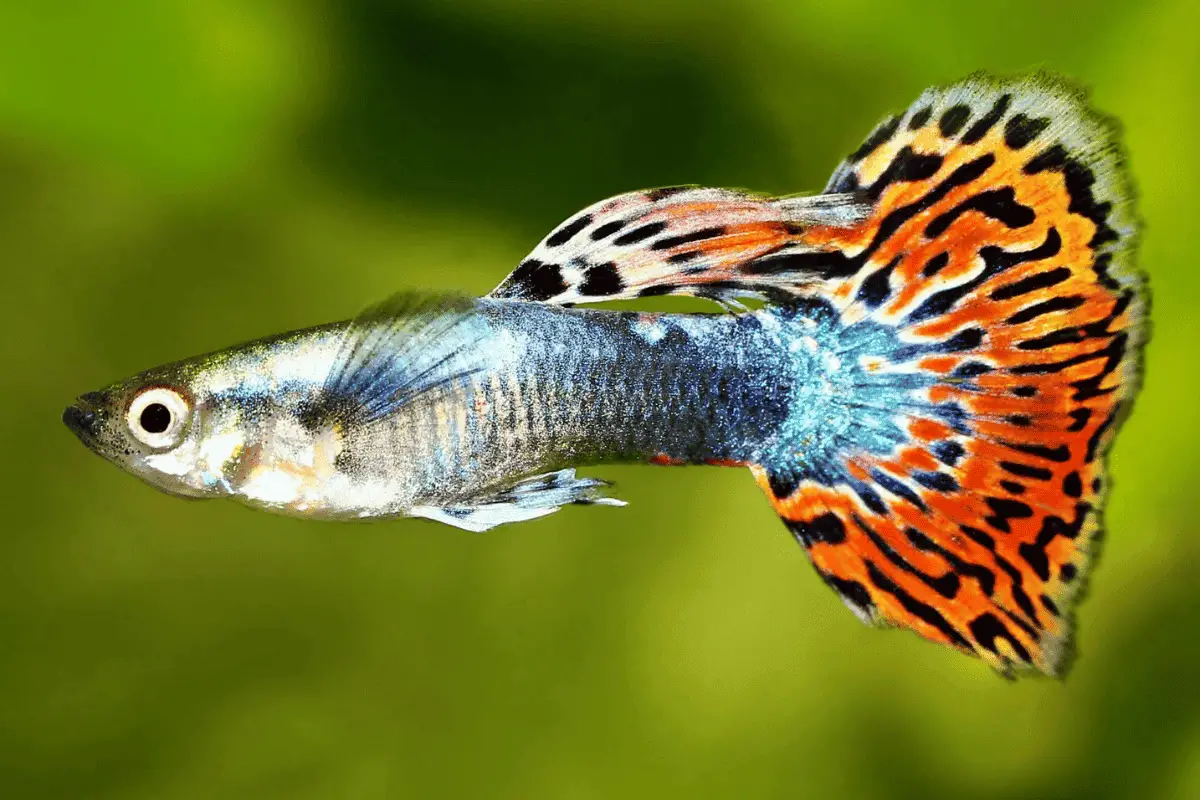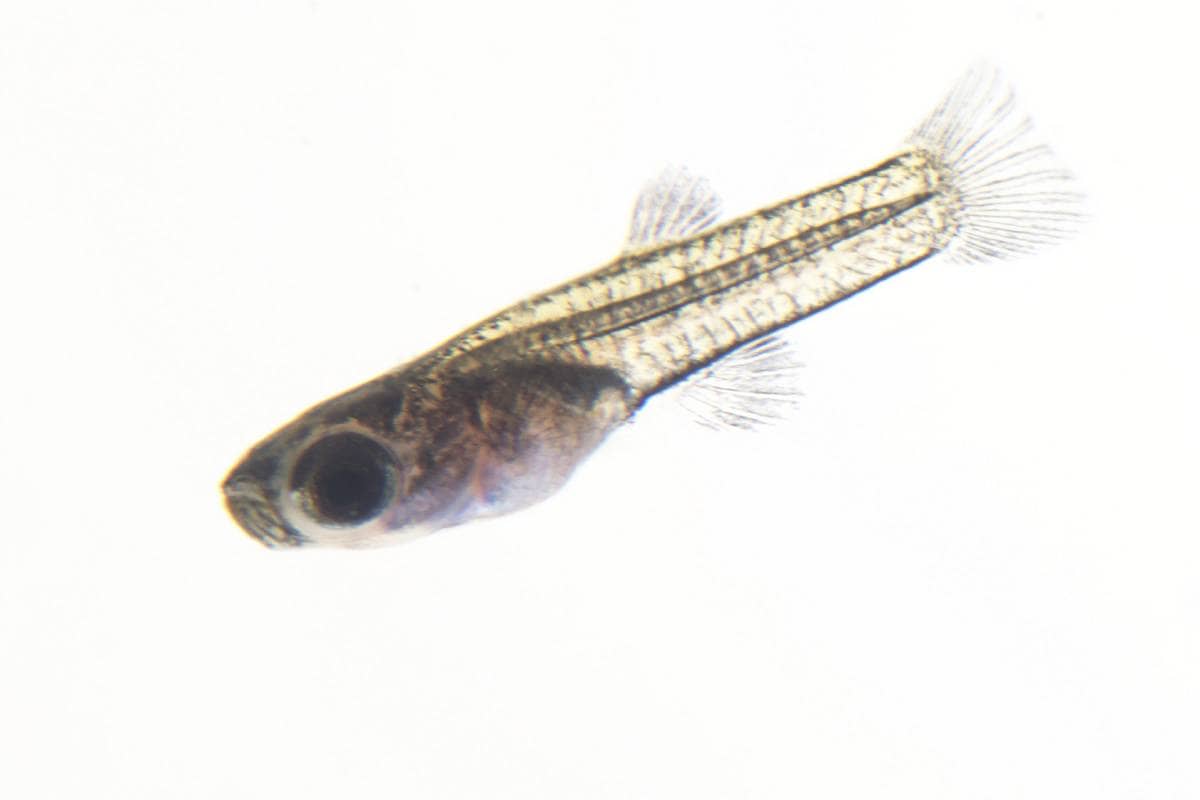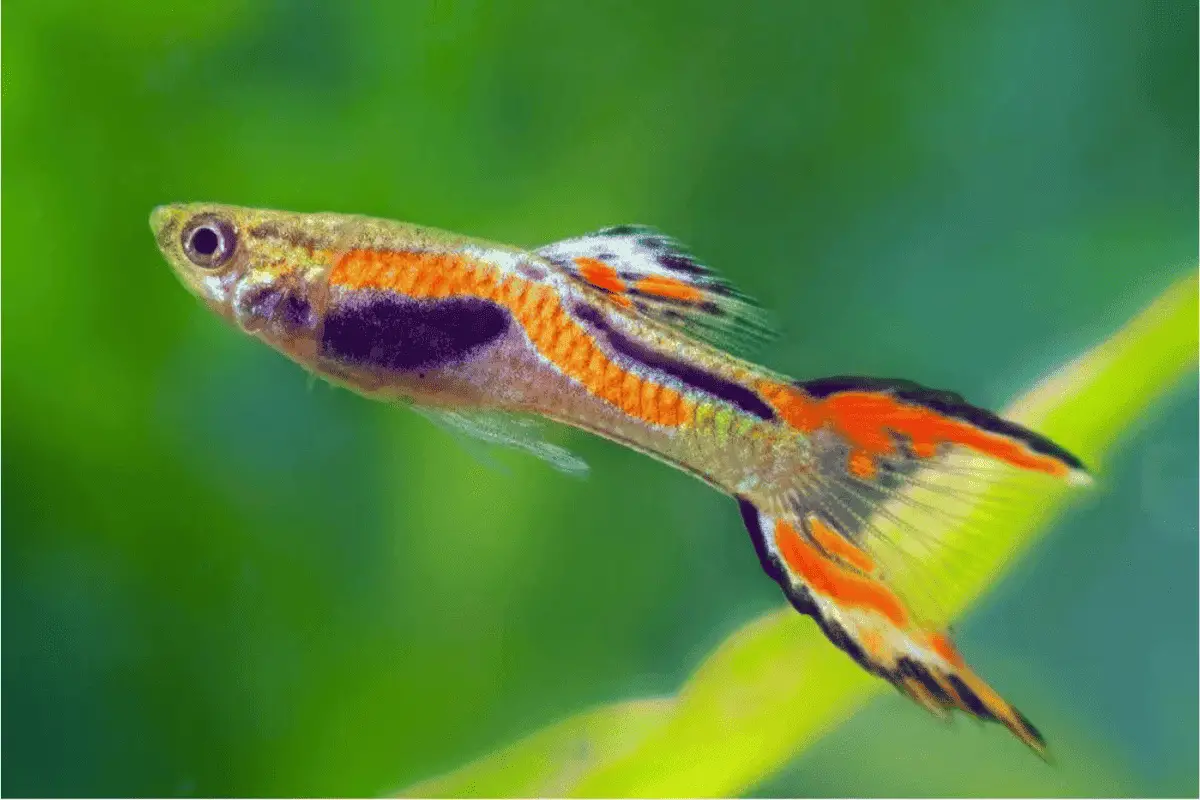If you’re thinking about getting guppies and want to do it right, you’re in the right place.
I had lots of questions before I knew about these fish. It would have helped to know some key things earlier.
Here, I’ve put together 21 cool facts about guppies you should really know. Let’s dive right into it.
Also Read: Guppy Care Guide
1. Guppies: Native to South America
Guppies started their journey in the warm, freshwater streams of South America, where they quietly evolved over the millennia.
This humble origin in the tropical regions shaped their resilience and adaptability.
Today, these small, vibrant fish are a staple in aquariums worldwide, a testament to their enduring appeal that began in the flowing waters of South America.

2. Over 300 Color Varieties
With a dazzling array of over 300 color varieties, guppies are the fashionistas of the fish world.
Each guppy flaunts a unique blend of colors and patterns, making them a living tapestry that’s constantly changing.
This incredible diversity is not just a feast for the eyes; it’s a reflection of their remarkable genetic adaptability.
3. Rapid Maturation in Months
Guppies are a marvel of rapid growth, maturing in just a few months.
This quick maturation allows them to reproduce and multiply at an impressive rate, ensuring their survival in diverse environments.
It’s a life strategy that has enabled them to thrive in both their native habitats and new environments around the world.

4. Used in Space Research
Guppies have even made a splash in space research, being among the few select creatures to travel beyond our planet.
Scientists have used them to study the effects of microgravity on biological processes, gaining insights that are as valuable as they are fascinating.
These tiny fish, once at home in South American waters, have boldly gone where few have gone before.
5. Adaptable to Various Water Conditions
Guppies are not just pretty; they’re hardy survivors, adaptable to a wide range of water conditions.
From the soft, acidic waters of their native streams to harder, alkaline waters in other regions, they manage to thrive.
This adaptability makes them a popular choice for both novice and experienced aquarists, embodying resilience in a tiny, colorful package.

6. Prefer Living in Groups
Guppies are social swimmers, preferring the company of their kind in shimmering, dynamic groups.
This group living, or shoaling, provides safety in numbers from predators and creates a lively underwater community.
Observing them interact in their aquatic squads is like watching a well-choreographed dance of vibrant colors and swift movements.
Also Read: How Many Guppies In A Fish Tank?
7. Frequent Year-Round Breeders
Guppies don’t believe in taking breaks when it comes to reproduction; they are prolific breeders throughout the year.
This constant breeding cycle ensures a steady population growth, making them a robust species in fluctuating environments.
Their reproductive tenacity is a key reason why guppies can easily establish populations in new habitats.

8. Live Bearers, Not Egg Layers
Unlike many fish that lay eggs, guppies give birth to live young, a trait known as viviparity.
This reproductive strategy means their fry (baby fish) are born fully formed and ready to swim, providing a survival advantage right from birth.
This fascinating aspect of their life cycle has intrigued scientists and hobbyists alike, offering a window into the diverse ways life thrives in water.
9. Males: Smaller, More Colorful
In the world of guppies, males take the spotlight with their smaller size but more extravagant colors and elaborate fin designs.
This flamboyant appearance plays a crucial role in attracting females and is a classic example of sexual dimorphism, where two sexes of the same species exhibit different characteristics.
The males’ vivid colors and lively displays are not just a treat for the eyes but also an important part of their mating rituals.

10. Omnivorous Diet
Guppies are not picky eaters; they are omnivores, happily munching on a diet that includes plant material and small aquatic organisms.
This varied diet helps them thrive in diverse environments and contributes to their overall health and vibrancy.
Their omnivorous nature makes them easy to care for, adding to their appeal as one of the most popular aquarium fish.
11. Swift Evasion of Predators
Guppies have a knack for swiftly evading predators, turning their small size into an advantage.
Their quick, darting movements and ability to rapidly change direction make them elusive targets in the wild.
This agility is crucial for their survival, especially since they are a favored snack for larger fish and other aquatic hunters.

12. Variable Lifespan
The lifespan of guppies can vary quite a bit, typically ranging from one to three years, though some can live longer under optimal conditions.
Factors like genetics, diet, and environment play significant roles in determining how long these colorful fish thrive.
This variability in lifespan is a reminder of the delicate balance required to maintain healthy aquatic life.
13. Popular in Aquascaping
Guppies are a popular choice in the art of aquascaping, where creating underwater landscapes is akin to painting a living picture.
Their vibrant colors and active nature add dynamic beauty to planted tanks, harmonizing with the greens and blues of the aquatic plants.
Guppies not only enhance the visual appeal of aquascapes but also bring life and movement to these carefully crafted ecosystems.

14. Peaceful in Community Tanks
Guppies are known for their peaceful demeanor, making them ideal inhabitants for community aquariums.
They coexist harmoniously with other non-aggressive fish, adding to the serene and social atmosphere of a well-balanced tank.
Their amiable nature is one of the many reasons why both novice and experienced aquarists cherish these delightful creatures.
15. Selective Breeding: Hobbyists’ Delight
Selective breeding has turned guppies into a hobbyist’s delight, with enthusiasts continually developing new color varieties and patterns.
This pursuit of aesthetic perfection and genetic diversity has resulted in an astonishing array of guppy varieties, each more stunning than the last.
The art of selective breeding not only showcases human creativity but also highlights the incredible genetic plasticity of these small, yet extraordinary fish.

16. Specific Tank Size Recommendations
For guppies, a tank of at least 5 gallons is recommended, but more space is always better.
This size provides enough room for swimming and reduces stress, promoting healthier and more active fish.
However, if you plan to have a larger group or breed them, opting for a 10 to 20-gallon tank would be ideal to accommodate their social nature and reproductive activities.
Also Read: Stress In Guppy Fish
17. Twenty to Fifty Babies Per Birth
Guppies are prolific breeders, with females capable of giving birth to 20-50 babies, or fry, in a single birthing event.
This high birth rate is part of what makes them so resilient and successful in various environments.
The sight of a guppy mother releasing a cloud of tiny, darting fry is a fascinating event for any aquarist.

18. Saltwater Adaptability Studies
Guppies have been the subject of numerous studies focusing on their ability to adapt to saltwater environments.
These studies explore the remarkable physiological and genetic changes that enable some guppy populations to survive in saltier conditions, offering insights into evolutionary adaptability.
Understanding how guppies cope with such environmental changes can provide valuable information for conservation and breeding programs.
Also Read: Can Guppies Live In Saltwater?
19. Indicators of Environmental Health
Guppies serve as important bioindicators, reflecting the health of their aquatic environments.
Changes in their behavior, health, or population dynamics can signal shifts in water quality or ecosystem balance.
This makes them valuable in studies monitoring the effects of pollutants, habitat changes, and other environmental factors.

20. Competitive Guppy Shows
Guppies have their own competitions, akin to dog shows, where breeders showcase their most beautiful specimens.
These competitive guppy shows judge fish based on color, size, fin shape, and overall appearance.
They’re not just a display of breeding prowess but also a celebration of the guppy’s incredible diversity and the passion of those who raise them.
21. Guppies Can Learn to Navigate Mazes
Guppies possess a surprising level of intelligence for such small fish.
They can be trained to navigate through mazes for rewards, demonstrating not only memory capabilities but also spatial awareness and problem-solving skills.
This ability is particularly remarkable given their size and is a testament to the complex behaviors small fish can exhibit.

Can Guppies Recognize Their Owners?
Guppies, like many fish, can recognize and respond to consistent environmental cues, including those associated with their owners.
However, this recognition is more about associating their owner’s presence with feeding times rather than individual recognition.
They are likely to become more active and swim towards the tank glass when they see familiar figures, expecting food or interaction.
Is It OK to Touch Guppies?
Touching guppies is generally not recommended as their delicate bodies and slimy coating can be easily damaged by human hands.
The oils and residues on human skin can also disrupt their protective mucous layer, making them susceptible to infections and stress.
If necessary, it’s best to gently herd them using a soft net rather than handling them directly.

Conclusions
For quick readers, here’s a short summary:
- Originating from South America, guppies are renowned for their adaptability and over 300 color varieties, making them a favorite in aquariums globally.
- Rapid maturation and frequent year-round breeding, combined with their unique live-bearing reproduction, contribute to their robust populations in diverse habitats.
- Their role in space research and adaptability to various water conditions, including some populations’ transition to saltwater, highlights their evolutionary versatility.
- Guppies’ omnivorous diet, agile predator evasion, and variable lifespan exemplify their adaptability, while their prominence in aquascaping showcases their aesthetic appeal.
- Serving as bioindicators of environmental health and stars of competitive shows, guppies reflect ecological significance and the hobbyists’ passion for selective breeding.